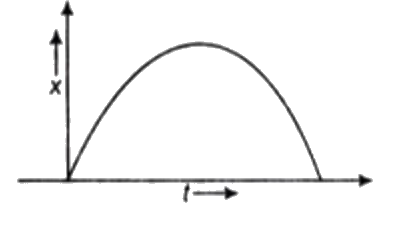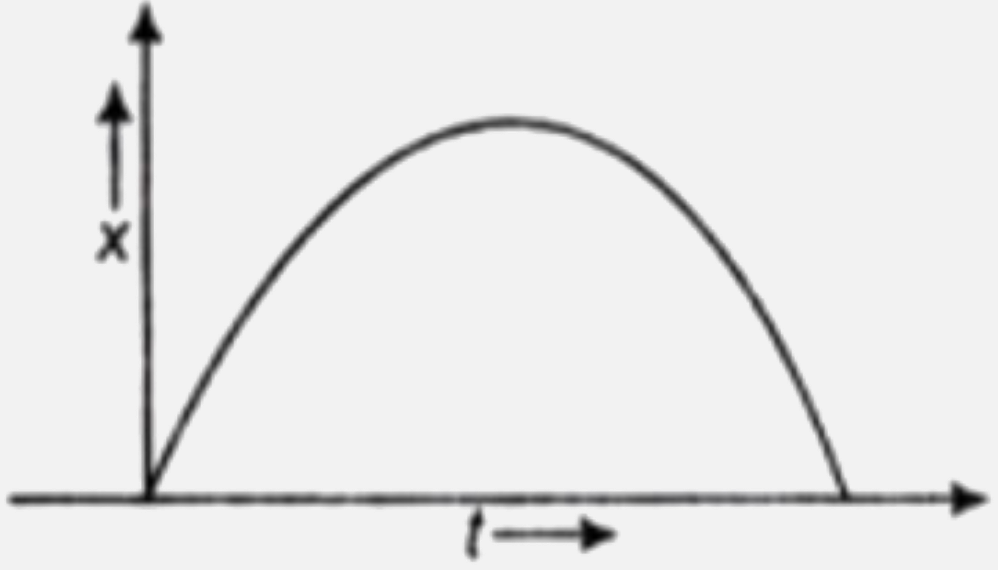(A):Displacement of a body is the signed sum of the area under velocity-time graph.
(R ):Displacement is a vector quantity.
The correct Answer is:A
To solve the question regarding the assertion and reason related to displacement, we will analyze both statements step by step.
1. Understanding the Assertion:
- The assertion states that "Displacement of a body is the signed sum of the area under the velocity-time graph."
- Displacement is defined as the change in position of an object and can be calculated using the area under the velocity-time graph. The area above the time axis (positive velocity) contributes positively to displacement, while the area below the time axis (negative velocity) contributes negatively. Therefore, the assertion is true.
2. Understanding the Reason:
- The reason states that "Displacement is a vector quantity."
- Displacement indeed has both magnitude and direction, which qualifies it as a vector quantity. Thus, the reason is also true.
3. Analyzing the Relationship:
- While both the assertion and reason are true, we need to determine if the reason correctly explains the assertion.
- The assertion focuses on how to calculate displacement using the area under the velocity-time graph, while the reason merely states that displacement is a vector quantity. The reason does not provide a direct explanation for why the area under the graph represents displacement.
4. Conclusion:
- The assertion is true, and the reason is true, but the reason is not the correct explanation for the assertion. Therefore, we conclude that:
- Assertion (A) is true.
- Reason (R) is true, but does not explain (A).
Final Answer:
- Assertion (A): True
- Reason (R): True, but does not explain (A)
---
- The assertion states that "Displacement of a body is the signed sum of the area under the velocity-time graph."
- Displacement is defined as the change in position of an object and can be calculated using the area under the velocity-time graph. The area above the time axis (positive velocity) contributes positively to displacement, while the area below the time axis (negative velocity) contributes negatively. Therefore, the assertion is true.
- The reason states that "Displacement is a vector quantity."
- Displacement indeed has both magnitude and direction, which qualifies it as a vector quantity. Thus, the reason is also true.
- While both the assertion and reason are true, we need to determine if the reason correctly explains the assertion.
- The assertion focuses on how to calculate displacement using the area under the velocity-time graph, while the reason merely states that displacement is a vector quantity. The reason does not provide a direct explanation for why the area under the graph represents displacement.
- The assertion is true, and the reason is true, but the reason is not the correct explanation for the assertion. Therefore, we conclude that:
- Assertion (A) is true.
- Reason (R) is true, but does not explain (A).
- Assertion (A): True
- Reason (R): True, but does not explain (A)
Similar Questions
Knowledge Check
The area under velocity-time graph for a particle in a given interval of time represnets
AvelocityBaccelerationCwork doneDDisplacement does not tell the nature of the actual motion of a particle between the points.
Draw displacement time and acceleration -time graph for the given velocity-time graph

View SolutionThe displacement-time graph of a body is shown in.
 .
.
The velocity-time graph of the motion of the body will be .
View SolutionDraw a displacement-time graph for a boy going to school with a uniform velocity.
View SolutionGraphs are very useful to represent a physical situation. Various quantities can be easily represented on graphs and other quantites can be determined from the graph. For example the slope of velocity-time graph represents instantaneous acceleration. For a motion with constant acceleration slope of velocity-time graph is constant. If acceleration is changing with time, slope with change and thus velocity-time graph will be a non-linear curve. Further the area of velocity-time graph gives displacement.
The average velocity of the car for the entire trip is
View SolutionGraphs are very useful to represent a physical situation. Various quantities can be easily represented on graphs and other quantites can be determined from the graph. For example the slope of velocity-time graph represents instantaneous acceleration. For a motion with constant acceleration slope of velocity-time graph is constant. If acceleration is changing with time, slope will change and thus velocity-time graph will be a non-linear curve. Further the area of velocity-time graph gives displacement.
The correct relation between v0,a1,a2andt0 is
View SolutionThe displacement -time (x– t) graph of a body is given as

The corresponding velocity -time (v – t ) graph will be
View SolutionThe displacement-time (x - t) graph of a body is given as

The corresponding velocity -time (v - t) graph will be
View Solution
